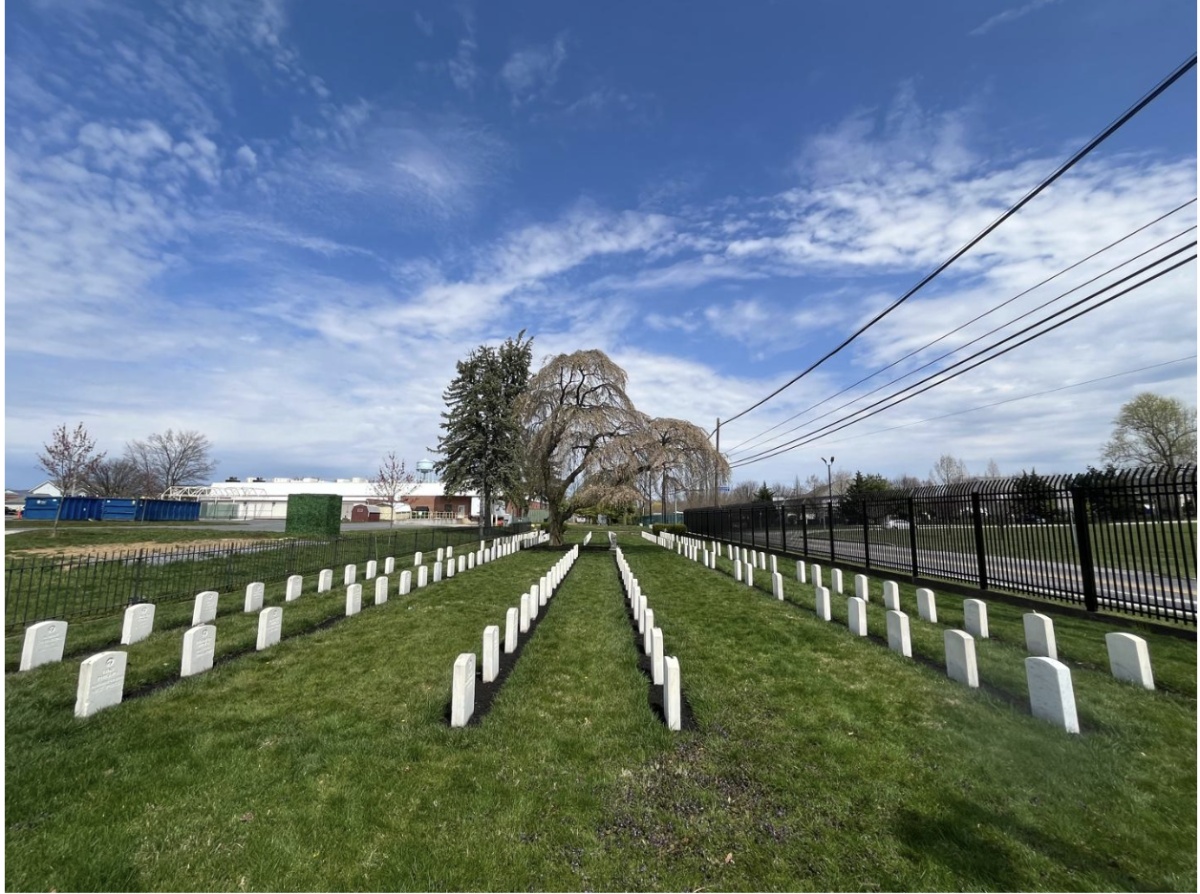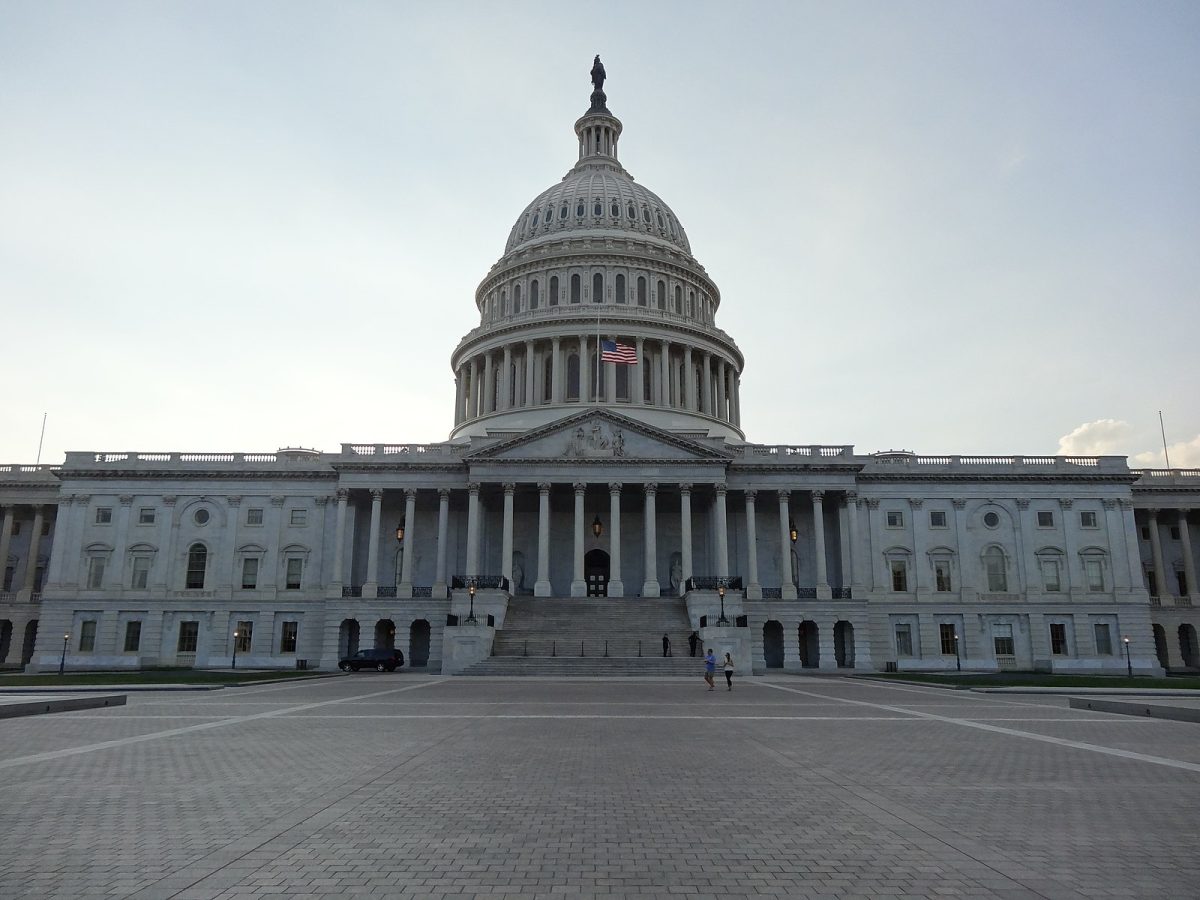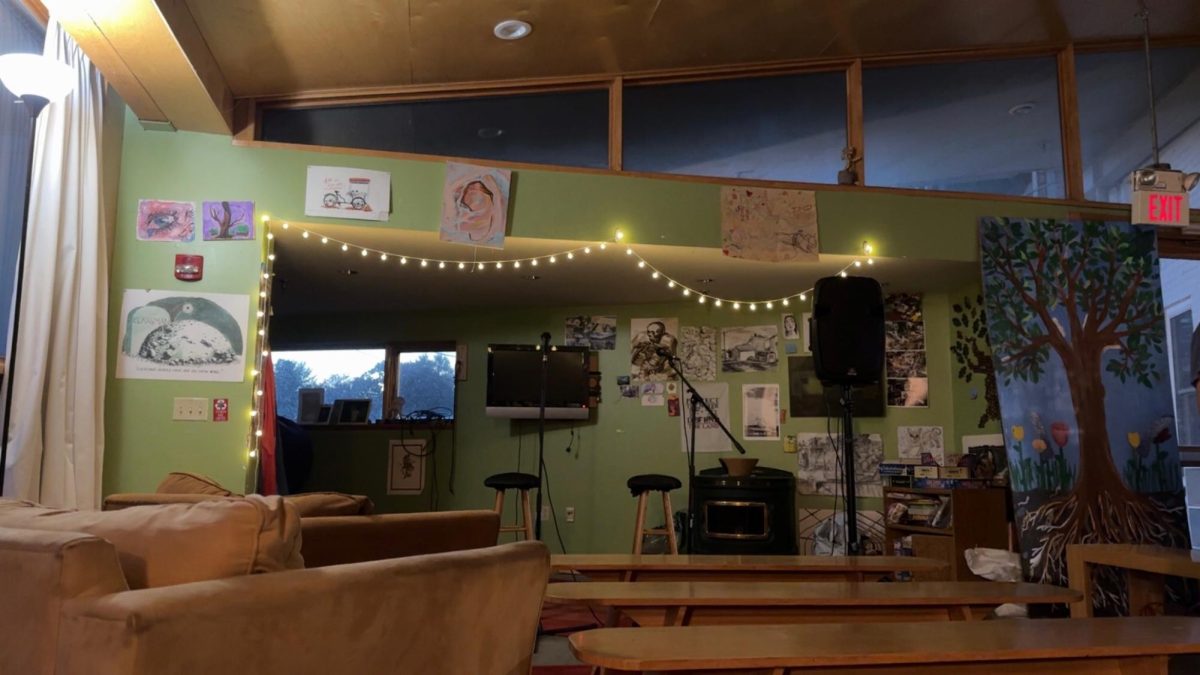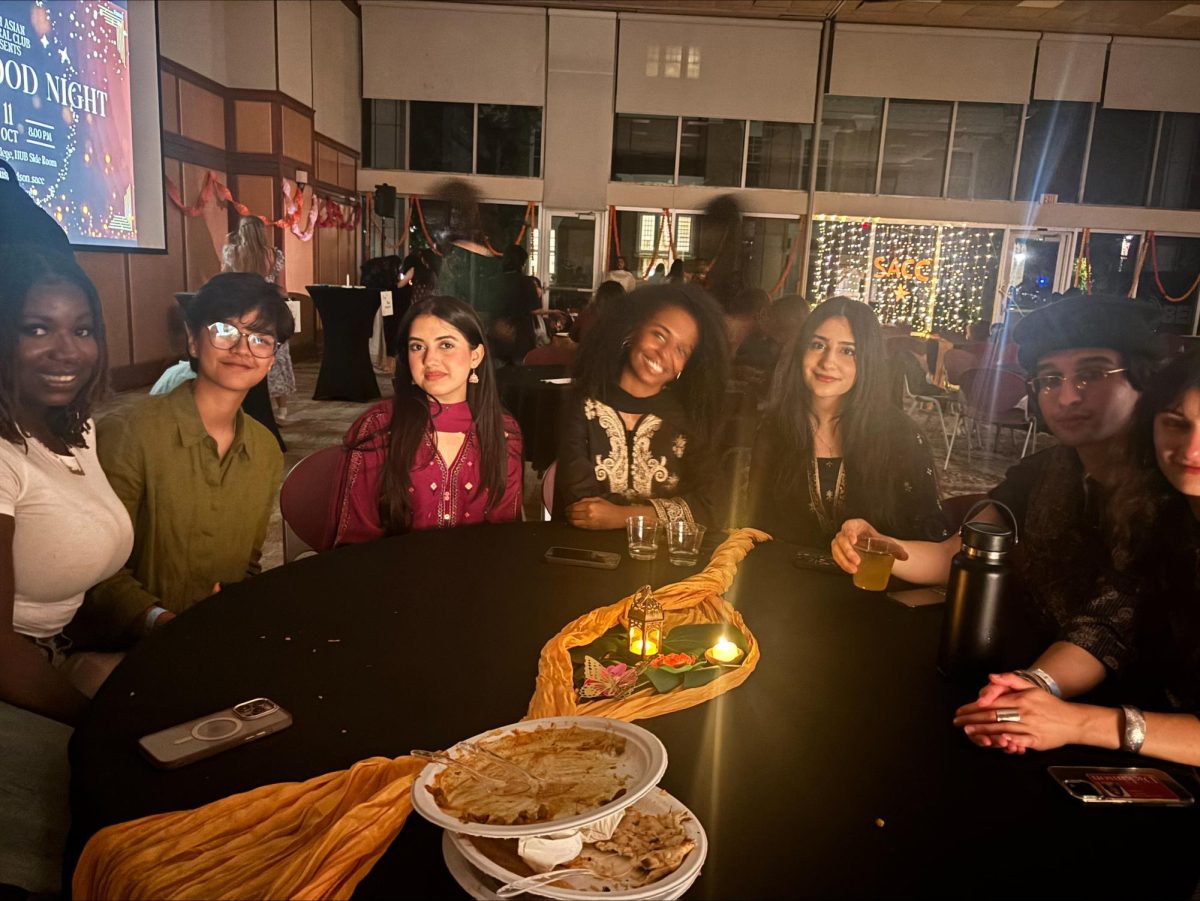The silken flowers, woven bowls, toys, marbles and coins left on the graves of the Carlisle Indian Industrial School (CIIS) cemetery testify that though the school closed 106 years ago, the children who died there are not forgotten.
“No matter what, there is still a small group of people who care about what happened there, and that the people who did not get to go home have a home and a family here,” said Sandi Cianciulli, a descendant of Geoffrey and Bertha Chipps, two students who survived the school.
“Whenever there is a tragedy and people suffer a loss, they can say, look how lucky I am, my relatives got to go home, but these kids are here with no family, no one to make sure that they are remembered,” she added.
The cemetery lies at the edge of the Army War College Barracks, visible to commuters passing by on Claremont Road. The children’s graves lie in six straight lines, on either side of a towering cherry tree that recently bloomed. Only one large dark headstone underneath the tree breaks the monotonous uniformity of the cemetery, that of Thomas Marshall, who attended both Carlisle and Dickinson College.
It is easy to assume that the graves belong to veterans because they are located within the barracks, and other than Marshall’s, they are standard issue, gray, military graves usually adorned with a crucifix at the top. In actuality, they are engraved with Indigenous children’s names, their tribes, or the simple word “unknown.”
The remains of over 180 Indigenous children lie in the cemetery who died of various diseases including tuberculosis, mumps and measles during the school’s existence between 1879 and 1918. After the school closed, the U.S. Armed Forces retook posession of the Carlisle barracks as a rehabilitation center for World War I veterans.
The cemetery was moved in 1927 from its original location at the back of the barracks to allow for new construction. The public can visit the cemetery on weekdays but must first go to the welcome center across the road from the barracks to be screened.
More children died while attending CIIS than those buried in the cemetery. Some died during “outings,” periods when they worked for families across the mid-Atlantic region. Others became sick at Carlisle but were sent home to die, while still others died en route to their homes and are scattered in places as far-flung as New Orleans.
According to a Native News Online article by Jenna Kunze, the term “historical trauma” was created by Maria Yellow Horse Brave Heart, a caseworker of Hunkpapa and Oglala Lakota origin, to denote how people interiorize trauma, which is then reproduced in subsequent generations with detrimental health effects. Survivors of boarding schools, families of relatives buried at institutions including CIIS, and Indigenous communities as a whole experience historical trauma.
CIIS was the first federal off-reservation boarding school in the United States created to assimilate Indigenous children into white society, though other non-federal, on-reservation and day schools for Indigenous students also existed. Many of the practices at Carlisle, like the outing system were adopted at other schools. School founder, Army Captain Richard Henry Pratt first enrolled, often through coercion or force, the children of tribal chiefs from nations which had not signed treaties with the U.S. in order to control them, Cianciulli said.
Many students died far from home and others suffered poor conditions and abuse at the school. College Archivist Jim Gerencser said, “The psychological warfare was worse because the school told students that their family traditions, religion and food were something to be ashamed of.” he explained.
Darren Lone Fight, assistant professor of American Studies and founding director of Dickinson’s Center for the Futures of Native Peoples, cautioned against being uncritical of archival evidence. “Archives are factual, but they are rarely true, they are defined by what they do not include. You cannot see the full extent of the abuse because people do not want you to know, especially with institutions,” Lone Fight said.
According to scholar Jacqueline Fear-Segal, who spoke at the Central Pennsylvania Native American and Indigenous Studies Symposium hosted at Dickinson by the CNFP last weekend, by displacing the cemetery when it rehabited the barracks, the Army reasserted its power over a space inhabited by the bodies of Indigenous people. In 1935, white people began to be buried on the back right side of the cemetery.
Whether or not the Army meant to intentionally disrespect the buried children by moving the cemetery is unclear. Though Lone Fight said moving cemeteries was common, “Intentional, or not, it was incredibly devastating, there are multiple levels of trauma.”
On many headstones, the names of the children or their tribes are misspelled, while at least 10 read “unknown,” either because the child lacked a headstone in the original cemetery, or because the information available was illegible, Gerencser explained.
The cemetery is the only physical connection between people today and the roughly 7,800 Indigenous children from 139 different tribes who attended CIIS and the suffering that they endured, according to Fear-Segal. However, interviewees reiterated how the cemetery’s presence resists the ability to forget past injustices, and provides a path to healing for Indigenous communities and the possibility to enter a dialogue with non-Indigenous communities.
In 2017, after a decades-long fight, the Army began collaborating with tribes who wished to repatriate the remains of their relatives. Barbara Landis, retired Cumberland County historian, said that the Army uses the term “disinterment” rather than “repatriation.” “They prefer to treat them as family activities, to help families bring relatives home,” she said. The Army set up a website to field requests for repatriations, but “it does not talk about the responsibility of the Army to the Indigenous nations,” Landis added.
Recently, an Indigenous Baptist organization visited the graves and Dickinson to learn how to use the Carlisle Indian School Digital Resource Center to research and identify their relatives buried at the cemetery. This year, the remains of between 11 and 13 children will be repatriated to their Nations.
Despite the return of some Indigenous children’s remains to their homelands, the cemetery will always exist because some tribes, like the Apache and the Navajo, do not want to disturb the remains. As an alternative to repatriation, tribes can replace the old headstones with new ones which contain accurate information about the children.
Cianciulli and her organization, Circle Legacy Center, based in Lancaster, Pennsylvania, visit the cemetery often to perform ceremonies and leave gifts by the graves. Every year on the Saturday before Memorial Day, this year on May 25, the organization and its affiliate, the American Indian Society of Washington, D.C., honor the graves.
“We wear regalia and dance the jingle dance. I always get a good feeling when I’m there,” Cianciulli said. Afterward, people sing and there is a potluck. Cianciulli said anyone is invited, and to bring food to share.
The Circle Legacy Center’s goal is to create an interpretative center in Carlisle dedicated to CIIS. The center would educate the public on the U.S. government’s policies which resulted in the creation of assimilationist boarding schools, explain how the policies shifted over time, and highlight the realities of Indigenous people in the present.
The association wants to partner with Dickinson to create the center and is trying to find a tribe that would agree to build an Indigenous motif hotel in Carlisle to accommodate conventions of Indigenous groups, as the town lacks places to stay that are welcoming to Indigenous people, explained Cianciulli.
Despite CIIS’ aim of cultural genocide, interviewees noted that it is important to remember that the students were not only victims, but also survivors. Sometimes children were able to find enjoyment at the school, like riding the trolley to Boiling Springs, Landis said. The school’s football team was famous nationwide for its undefeated status. “They were told they had no value. Maybe their talent was defiance,” Cianciulli said.
Cianciulli is unwavering in her dedication to visit the children’s graves and describes the cemetery as a sacred space. “We appreciate the people who came before and passed it down and we are not going to stop, even if just Apaches and Navajo are left,” she said.
Cianciulli first visited the graves with her father when she was a young child. “They’re all happy you’re here,” her father said. “All these headstones are children.”







Christina Morford • Jul 18, 2025 at 8:02 pm
I’m reading Medicine River by Mary Annette Pember and it is truly disturbing. Especially the number of children who likely died of epidemics and were not properly recorded. Canada has uncovered thousands. Then there is the horrific abuse suffered at religious-run boarding schools. Such injustice as the politics of power yearned to strip their culture in such a manipulative and calculating way, leading to generations of trauma and shame. Survivors should be supported as they seek remembrance.
Pamela Shenenberger • Jul 7, 2025 at 12:48 pm
I am appalled at what went on during that time. I never agreed with the history of what we did to the Indian people. There was ,and is so much untouched land out west that they could have had their own land. Then ,we take their children and put them in places as this ? I am so so sorry as an American that things like this were ever done to children!!!!
Cathy SJ • Jan 11, 2025 at 9:56 am
I happened upon this link via a deep dive online, looking for more information about the injustices at Carlisle and beyond. Reading Robin Wall Kimmerer’s book, Braiding Sweetgrass, is taking me on an incredible journey and so often that stirs up such unexpected emotions. Not unexpected because I’m unaware-I’m not. Unexpected because I feel it deep inside and I continue to process it all-or try – and learn from it and use it. I’d truly like to come and pay my respects the best I can.
D.L Sanders • Dec 10, 2024 at 12:22 am
I visited these graveside a couple times. I thought it sad, especially moreso after finding out the full history of why.